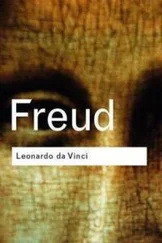Leonardo da Vinci - The Notebooks of Leonardo Da Vinci. Complete
Здесь есть возможность читать онлайн «Leonardo da Vinci - The Notebooks of Leonardo Da Vinci. Complete» — ознакомительный отрывок электронной книги совершенно бесплатно, а после прочтения отрывка купить полную версию. В некоторых случаях можно слушать аудио, скачать через торрент в формате fb2 и присутствует краткое содержание. Жанр: foreign_prose, foreign_home, visual_arts, foreign_antique, на английском языке. Описание произведения, (предисловие) а так же отзывы посетителей доступны на портале библиотеки ЛибКат.
- Название:The Notebooks of Leonardo Da Vinci. Complete
- Автор:
- Жанр:
- Год:неизвестен
- ISBN:нет данных
- Рейтинг книги:3 / 5. Голосов: 1
-
Избранное:Добавить в избранное
- Отзывы:
-
Ваша оценка:
- 60
- 1
- 2
- 3
- 4
- 5
The Notebooks of Leonardo Da Vinci. Complete: краткое содержание, описание и аннотация
Предлагаем к чтению аннотацию, описание, краткое содержание или предисловие (зависит от того, что написал сам автор книги «The Notebooks of Leonardo Da Vinci. Complete»). Если вы не нашли необходимую информацию о книге — напишите в комментариях, мы постараемся отыскать её.
The Notebooks of Leonardo Da Vinci. Complete — читать онлайн ознакомительный отрывок
Ниже представлен текст книги, разбитый по страницам. Система сохранения места последней прочитанной страницы, позволяет с удобством читать онлайн бесплатно книгу «The Notebooks of Leonardo Da Vinci. Complete», без необходимости каждый раз заново искать на чём Вы остановились. Поставьте закладку, и сможете в любой момент перейти на страницу, на которой закончили чтение.
Интервал:
Закладка:
DEFINITION.
The intersection n is produced by the shadows caused by the light b , because this light b produces the shadow x b , and the shadow s b , but the intersection m is produced by the light a which causes the shadow s a , and the shadow x a .
But if you uncover both the lights a b , then you get the two shadows n m both at once, and besides these, two other, simple shadows are produced at r o where neither of the two lights falls at all. The grades of depth in compound shadows are fewer in proportion as the lights falling on, and crossing them are less numerous.
186
Why the intersections at n being composed of two compound derived shadows, forms a compound shadow and not a simple one, as happens with other intersections of compound shadows. This occurs, according to the 2nd [diagram] of this [prop.] which says:—The intersection of derived shadows when produced by the intersection of columnar shadows caused by a single light does not produce a simple shadow. And this is the corollary of the 1st [prop.] which says:—The intersection of simple derived shadows never results in a deeper shadow, because the deepest shadows all added together cannot be darker than one by itself. Since, if many deepest shadows increased in depth by their duplication, they could not be called the deepest shadows, but only part-shadows. But if such intersections are illuminated by a second light placed between the eye and the intersecting bodies, then those shadows would become compound shadows and be uniformly dark just as much at the intersection as throughout the rest. In the 1st and 2nd above, the intersections i k will not be doubled in depth as it is doubled in quantity. But in this 3rd, at the intersections g n they will be double in depth and in quantity.
187
HOW AND WHEN THE SURROUNDINGS IN SHADOW MINGLE THEIR DERIVED SHADOW WITH THE LIGHT DERIVED FROM THE LUMINOUS BODY.
The derived shadow of the dark walls on each side of the bright light of the window are what mingle their various degrees of shade with the light derived from the window; and these various depths of shade modify every portion of the light, except where it is strongest, at c . To prove this let d a be the primary shadow which is turned towards the point e , and darkens it by its derived shadow; as may be seen by the triangle a e d , in which the angle e faces the darkened base d a e ; the point v faces the dark shadow a s which is part of a d , and as the whole is greater than a part, e which faces the whole base [of the triangle], will be in deeper shadow than v which only faces part of it. In consequence of the conclusion [shown] in the above diagram, t will be less darkened than v , because the base of the t is part of the base of the v ; and in the same way it follows that p is less in shadow than t , because the base of the p is part of the base of the t . And c is the terminal point of the derived shadow and the chief beginning of the highest light.
[Footnote: The diagram on Pl. IV, No. 5 belongs to this passage; but it must be noted that the text explains only the figure on the right-hand side.]
FOURTH BOOK ON LIGHT AND SHADE
On the shape of the cast shadows (188-191).
188
The form of the shadow cast by any body of uniform density can never be the same as that of the body producing it. [Footnote: Comp. the drawing on PI. XXVIII, No. 5.]
189
No cast shadow can produce the true image of the body which casts it on a vertical plane unless the centre of the light is equally distant from all the edges of that body.
190
If a window a b admits the sunlight into a room, the sunlight will magnify the size of the window and diminish the shadow of a man in such a way as that when the man makes that dim shadow of himself, approach to that which defines the real size of the window, he will see the shadows where they come into contact, dim and confused from the strength of the light, shutting off and not allowing the solar rays to pass; the effect of the shadow of the man cast by this contact will be exactly that figured above.
[Footnote: It is scarcely possible to render the meaning of this sentence with strict accuracy; mainly because the grammatical construction is defective in the most important part—line 4. In the very slight original sketch the shadow touches the upper arch of the window and the correction, here given is perhaps not justified.]
191
A shadow is never seen as of uniform depth on the surface which intercepts it unless every portion of that surface is equidistant from the luminous body. This is proved by the 7th which says:—The shadow will appear lighter or stronger as it is surrounded by a darker or a lighter background. And by the 8th of this:—The background will be in parts darker or lighter, in proportion as it is farther from or nearer to the luminous body. And:—Of various spots equally distant from the luminous body those will always be in the highest light on which the rays fall at the smallest angles: The outline of the shadow as it falls on inequalities in the surface will be seen with all the contours similar to those of the body that casts it, if the eye is placed just where the centre of the light was.
The shadow will look darkest where it is farthest from the body that casts it. The shadow c d , cast by the body in shadow a b which is equally distant in all parts, is not of equal depth because it is seen on a back ground of varying brightness. [Footnote: Compare the three diagrams on Pl. VI, no 1 which, in the original accompany this section.]
On the outlines of cast shadows (192-195).
192
The edges of a derived shadow will be most distinct where it is cast nearest to the primary shadow.
193
As the derived shadow gets more distant from the primary shadow, the more the cast shadow differs from the primary shadow.
194
OF SHADOWS WHICH NEVER COME TO AN END.
The greater the difference between a light and the body lighted by it, the light being the larger, the more vague will be the outlines of the shadow of that object.
The derived shadow will be most confused towards the edges of its interception by a plane, where it is remotest from the body casting it.
195
What is the cause which makes the outlines of the shadow vague and confused?
Whether it is possible to give clear and definite outlines to the edges of shadows.
On the relative size of shadows (196. 197).
196
THE BODY WHICH IS NEAREST TO THE LIGHT CASTS THE LARGEST SHADOW, AND WHY?
If an object placed in front of a single light is very close to it you will see that it casts a very large shadow on the opposite wall, and the farther you remove the object from the light the smaller will the image of the shadow become.
WHY A SHADOW LARGER THAN THE BODY THAT PRODUCES IT BECOMES OUT OF PROPORTION.
The disproportion of a shadow which is larger than the body producing it, results from the light being smaller than the body, so that it cannot be at an equal distance from the edges of the body [Footnote 11: H. LUDWIG in his edition of the old copies, in the Vatican library—in which this chapter is included under Nos. 612, 613 and 614 alters this passage as follows: quella parte ch'e piu propinqua piu cresce che le distanti , although the Vatican copy agrees with the original MS. in having distante in the former and propinque in the latter place. This supposed amendment seems to me to invert the facts. Supposing for instance, that on Pl. XXXI No. 3. f is the spot where the light is that illuminates the figure there represented, and that the line behind the figure represents a wall on which the shadow of the figure is thrown. It is evident, that in that case the nearest portion, in this case the under part of the thigh, is very little magnified in the shadow, and the remoter parts, for instance the head, are more magnified.]; and the portions which are most remote are made larger than the nearer portions for this reason [Footnote 12: See Footnote 11].
Читать дальшеИнтервал:
Закладка:
Похожие книги на «The Notebooks of Leonardo Da Vinci. Complete»
Представляем Вашему вниманию похожие книги на «The Notebooks of Leonardo Da Vinci. Complete» списком для выбора. Мы отобрали схожую по названию и смыслу литературу в надежде предоставить читателям больше вариантов отыскать новые, интересные, ещё непрочитанные произведения.
Обсуждение, отзывы о книге «The Notebooks of Leonardo Da Vinci. Complete» и просто собственные мнения читателей. Оставьте ваши комментарии, напишите, что Вы думаете о произведении, его смысле или главных героях. Укажите что конкретно понравилось, а что нет, и почему Вы так считаете.












